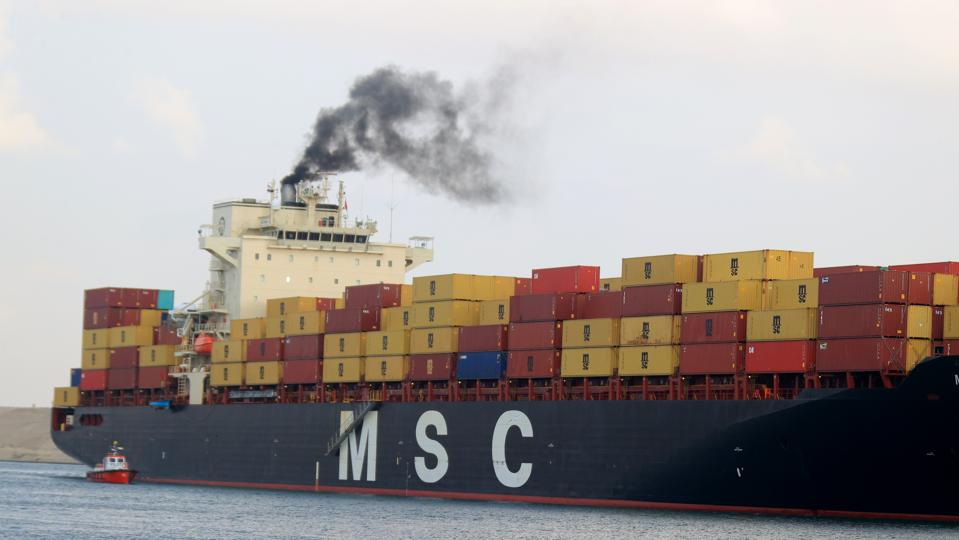Oil prices rose Tuesday after Iran sent a warship to the Red Sea, escalating tensions in the region as companies stand poised to decide whether to continue using the crucial trade artery following weeks of disruption from attacks by Tehran-backed Houthi militants based in Yemen.

A cargo ship crosses the Suez Canal, one of the most critical human-made waterways connects the Red Sea to the Mediterranean.
Anadolu via Getty Images
Key Facts
Brent crude, a major global benchmark for oil prices, climbed more than 2.5% early Tuesday morning.
At around 6 a.m. ET, Brent crude exceeded $79 a barrel, though prices dipped slightly an hour later to $78.69 a barrel.
U.S. benchmark West Texas Intermediate (WTI) also rose by more than 2.5% during trading Tuesday morning, reaching as high as $73.48 a barrel at around 6 a.m. ET.
WTI has since dipped to $73.34 a barrel but is, along with Brent, continuing a broadly upwards trend.
News Peg
Rising oil prices come after Iran dispatched a navy warship to the Red Sea on Monday in response to U.S. forces sinking three Houthi boats. It raises the prospect of escalating tensions in the region after weeks of maritime attacks from the Yemen-based rebel group, which has been targeting merchant ships linked to Israel. The Houthi fighters have controlled Yemen since seizing power from the government in 2014—it still fights for total control in a bloody and protracted civil war—are supported by Tehran and are allied to Hamas, the group Israel has vowed to eliminate in Gaza.
Key Background
The Houthi attacks have thrown one of the world’s most important shipping routes into disarray. An estimated 12% of global trade passes through the area, according to the Guardian, and its waters allow vessels to reach the Suez Canal and avoid traveling around Africa. Major shipping companies such as Maersk, Hapag-Lloyd and MSC have taken measures to avoid the Red Sea in the wake of the attacks, electing to take a longer and more time consuming trip to avoid the new danger, raising costs further at a time when many are already struggling with soaring prices. The sea route is especially important for the transport of oil, with vessels traveling through it to reach Europe from oil rich countries like Saudi Arabia and Iraq. The U.S. is leading an allied group of countries to secure and defend ships from the attackers.
What To Watch For
Shipping giant Maersk is set to decide whether it will resume sending vessels through the Suez Canal on Tuesday. It paused Red Sea transit for 48 hours on Sunday after Houthi militants tried to board one of its vessels. The attackers were repelled by U.S. military helicopters. Rival Hapag-Lloyd are also set to make an updated assessment on whether to continue avoiding the Red Sea on Tuesday.
Further Reading
Maersk Pauses Red Sea Sailing Again After Latest Houthi Attack (Forbes)
Oil Prices Poised To Soar As Global Demand Hits Record High, IEA Says (Forbes)